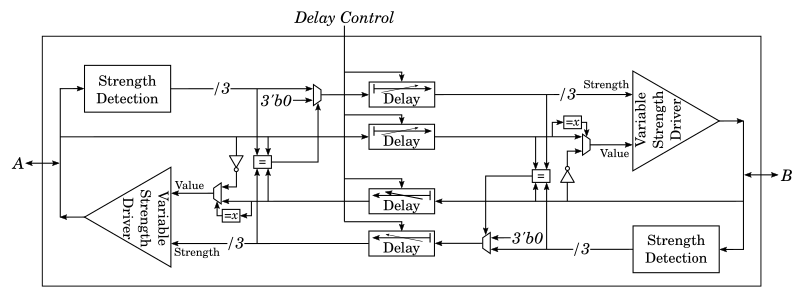I recently wrote about detecting driver strength in SystemVerilog. That work actually came out of solving a larger problem: How do you build a bidirectional digital wire model that includes propagation delay?
Motivation
The problem I had was how to model, in a digital simulation, the behavior of a “channel” (wire) for a high speed SerDes link. At the symbol rates used for modern high speed SerDes links, we start running into the physical limitations of copper as a conductor: the attenuation, frequency response, and speed of signals propagating through the channel are all factors that cannot be ignored as they might usually be. An additional requirement that my channel model had, was that it needed to be bidirectional. For my gate models to function, I not only needed to model the propagation delay of signals through the channel, but I needed drive strength resolution to resolve the value of the channel with drivers on both ends.
[Read More]